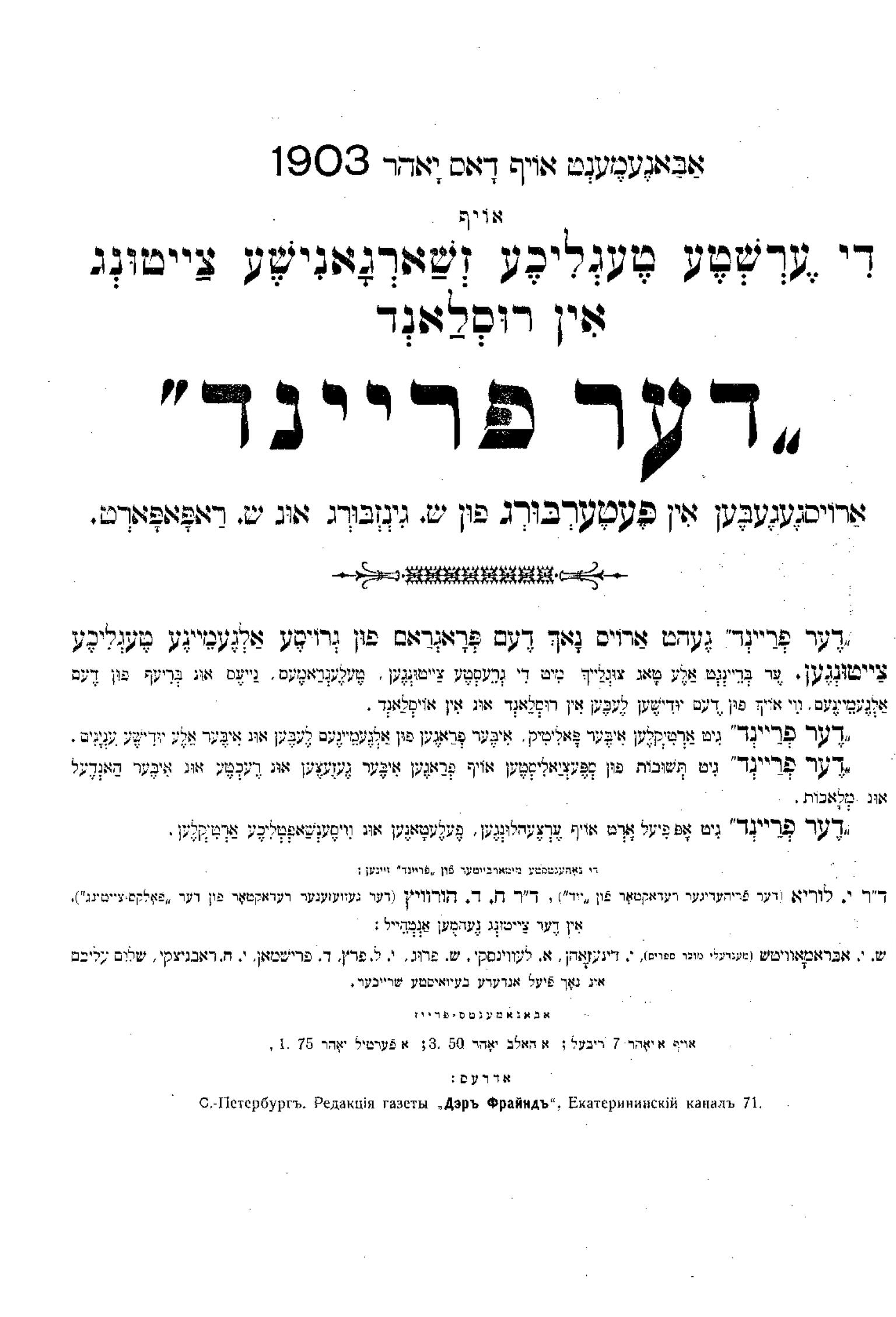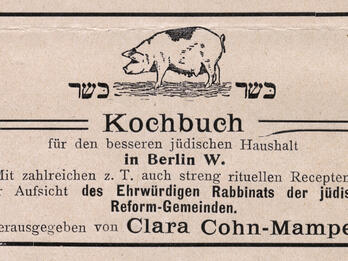Subscription Notice
Shaul Ginsburg
S. An-ski
1903
Subscription for the Year 1903 to the First Daily Zhargon (Yiddish) Newspaper in Russia, Der fraynd
Published in Saint Petersburg by Sh. Ginsburg and Sh. Rapaport [S. An-ski]
Der fraynd is published according to the standard of the large general daily newspapers. Every day it contains—as do the largest newspapers—telegrams, news, and letters about general as well as Jewish life both in Russia and abroad.
Der fraynd publishes articles about politics, questions of life in general, and all kinds of Jewish matters.
Der fraynd publishes responses by specialists to questions about laws and rights, business, and crafts.
Der fraynd devotes considerable space to stories, feuilletons, and scholarly articles.
The closest coworkers of Der fraynd are:
Dr. Y. Luria (the former editor of Der yid [The Jew]), Dr. H. D. Hurvits (the former editor of the Folkstsaytung [People’s Newspaper]).
Others who participate in publishing the newspaper are:
Sh. Y. Abramovitsh (Mendele Mokher Sforim), Y. Dinezon, E. Levinsky, Sh. Frug, Y. L. Peretz, D. Frishman, Y. Ḥ. Ravnitski, Sholem Aleichem, and many other famous writers.
Subscription price:
- For one year—7 rubles
- For half a year—3.5 rubles
- For a quarter year—1.75 rubles
Address:
- Editorial Office of the Newspaper Der Fraynd
- Yekaterinsky Canal 71, St. Petersburg
Translated by
.
Der fraynd (The Friend) was the first Yiddish daily in the Russian Empire. Founded by Shaul Ginsburg in St. Petersburg in 1903, Der fraynd was for several years the only Yiddish daily permitted in the Russian Empire. Due to that fact and a rising hunger for news among modernizing Jewish readers, but also because of its serious journalism and essays about many aspects of Russian Jewish life and culture, its daily circulation reached ninety thousand copies. In the same period, it also became one of the most important vehicles for Yiddish literature, publishing works by Sholem Aleichem, Y. L. Peretz, Sholem Asch, and Avrom Reyzen. Der fraynd had a significant influence on public opinion and shaped the secular Jewish culture of its time. Generally sympathetic to Zionism but otherwise apolitical, the newspaper turned to overt criticism of the Russian Empire during the 1905 revolution and provided a space for serious confrontation with the terrible anti-Jewish violence unleashed by antirevolutionary forces in 1906; this political turn led to its temporary closure by the authorities in 1906. Although the 1905 revolution was suppressed, one of its few lasting gains was a loosening of regime restrictions on newspaper publishing, and consequently, new Yiddish dailies began to spring up in centers with far larger Jewish populations than St. Petersburg, particularly Warsaw. In this context, Der fraynd too moved to Warsaw but could not compete with the newer dailies Haynt (founded 1908) and Moment (founded 1910); Der fraynd folded in 1912.
Credits
Der Fraynd, subscription notice, originally published as advertisement in Der Fraynd, no. 1 (Jan. 14, 1903): p. 2.
Published in: The Posen Library of Jewish Culture and Civilization, vol. 7.
You may also like
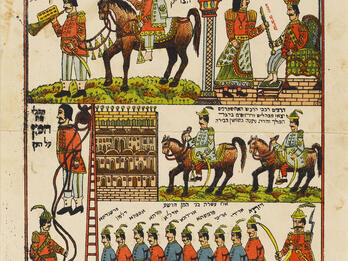
Purim Story
The Marriage of Regina
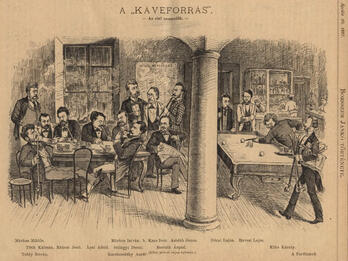
The History of Borsszem Janko (Johnny Peppercorn)
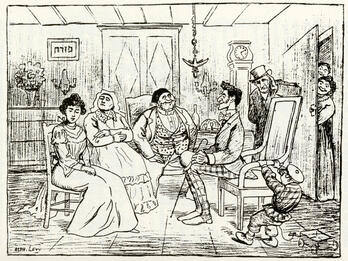
Familiar Jewish Scenes
An Original Jewish Cookbook
Creator Bio
Shaul Ginsburg
Born in Minsk in the Russian Empire (today in Belarus) to an affluent, business-owning family, Shaul Ginsburg associated with maskilic circles and the fledgling Zionist movement and contributed to the journal Ha-Magid during his student years. After receiving a law degree from the University of St. Petersburg in 1892, he turned toward journalism. By 1897, he was editing several regular columns for Voskhod, the key organ of the politically liberal and culturally Russified but Jewishly involved segment of Russian Jewry. In 1903, Ginsburg founded Der fraynd, the first Yiddish-language daily newspaper in the Russian Empire; it circulated widely and significantly influenced Yiddish journalism throughout the region. After leaving the paper in 1908, he dedicated himself to producing scholarship on Russian Jewry, most notably writing about the forced conscription of Jewish children during the nineteenth century. Ginsburg taught at the Institute for Judaic Studies in St. Petersburg after the Bolshevik Revolution, but in 1930 he emigrated to New York City, where he continued his historical research.
Creator Bio
S. An-ski
S. An-ski (the pen name of Shloyme Zanvyl Rapoport) grew up in Vitebsk in the Russian Empire (now in Belarus) in an impoverished household. Self-educated beyond heder, he immersed himself in Russian-language radical writings and Russian populism, a strand of Russian radical politics focused on the plight and potential of Russia’s vast peasant population. In 1892 he started writing as S. An-ski, initially in Russian but also in Yiddish, while working in Western Europe with other Russian radicals. In the course of the 1890s, An-ski began to engage with Jewish politics and culture as well, writing, among many other things, the song that became the Jewish Labor Bund’s anthem “Di shvue” (The Oath). Returning to Russia during the 1905 revolution, he remained active in Russian-language politics and culture but also threw himself into Jewish cultural life as a defender (at least initially) of the revolutionary movement against Jewish critics like the liberal nationalist historian Simon Dubnov, a literary and cultural critic, and a writer of fiction focused on the Russian Jewish situation in the tumultuous present. Most importantly, he became a pioneering folklorist and ethnographer of East European Jewry’s traditional folk culture, and championed the idea that folk culture offered unique moral resources and lessons around which the modern Jewish national community should build its cultural life. In 1912, he organized—with Joel Engel, Solomon Yudovin, and Avrom Rechtman—a pioneering and high-profile ethnographic expedition through Jewish Ukraine that collected thousands of folktales, folk songs, and ritual objects; took some two thousand photos; and recorded folk music. An-ski worked tirelessly as a relief worker during World War I, recording his experiences in a diary that would later become Khurbn Galitsye (1920), his account of wartime antisemitic persecutions by Russian and Austrian forces and the final ruination and profanation of Jewish shtetl life and traditional folk culture. From 1913 to 1917 he worked and reworked his most famous achievement, the folkloric-symbolist drama of greed, love, death, and mystical bonding and bondage known as Between Two Worlds or The Dybbuk. Written in Russian and Yiddish, it first became widely visible in a Hebrew translation made by Chaim Nahman Bialik and adopted as a canonical work by the Habima Troupe, the pioneering Hebrew-language symbolist theater troupe founded in wartime Russia in 1916. Shortly thereafter, An-ski’s own final Yiddish version became an equally central work in the budding Yiddish art theater scene. In 1937, a film version of The Dybbuk made in Poland became one of the crowning works of Yiddish film.
This notice, printed in the inaugural copy of Der fraynd (January 1, 1903) uses the term zhargon (jargon) to refer to Yiddish. The usage was common in the late nineteenth and early twentieth century and though it was sometimes meant pejoratively (implying that Yiddish was a “jargon” rather than a “pure” language), often it was simply used as a neutral, familiar name for the language; this is evidently the case here.
You may also like

Purim Story
The Marriage of Regina

The History of Borsszem Janko (Johnny Peppercorn)



